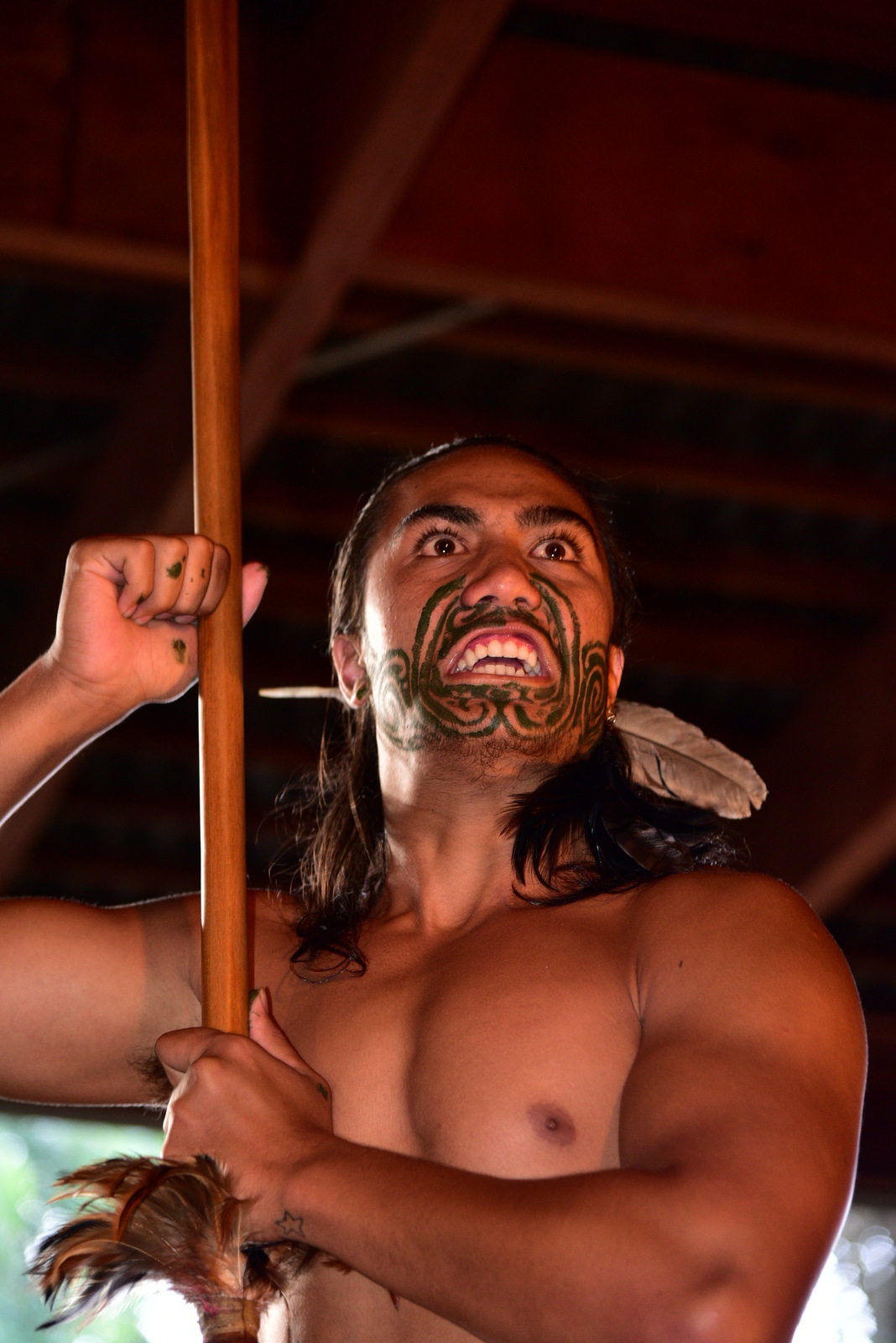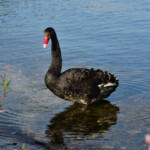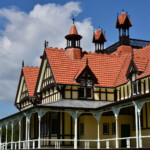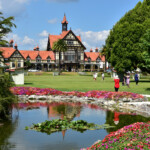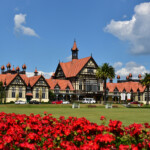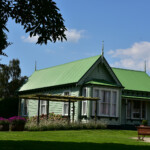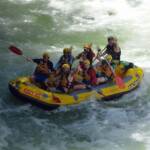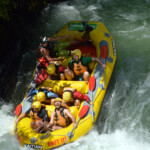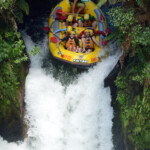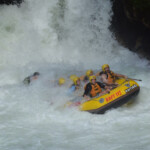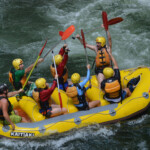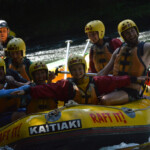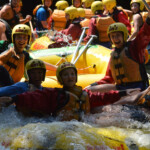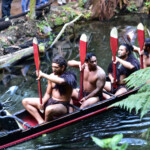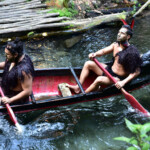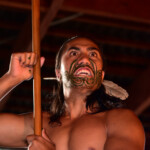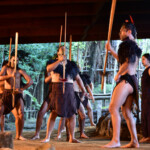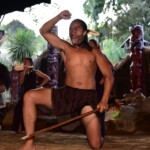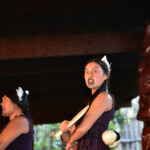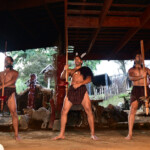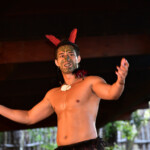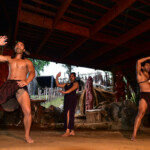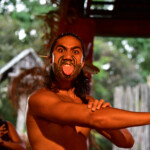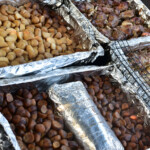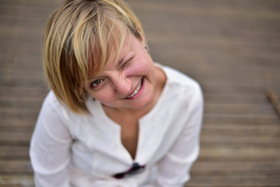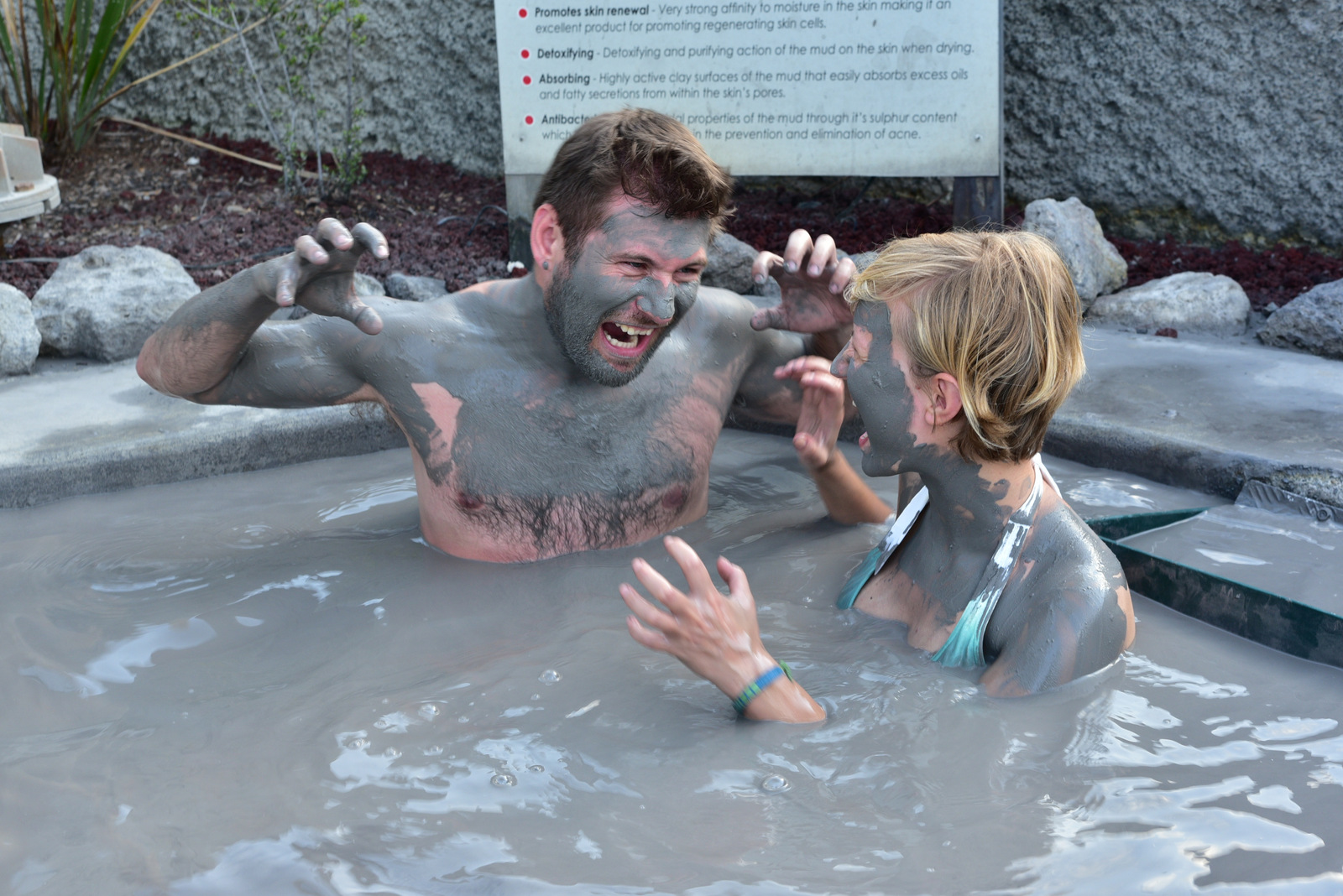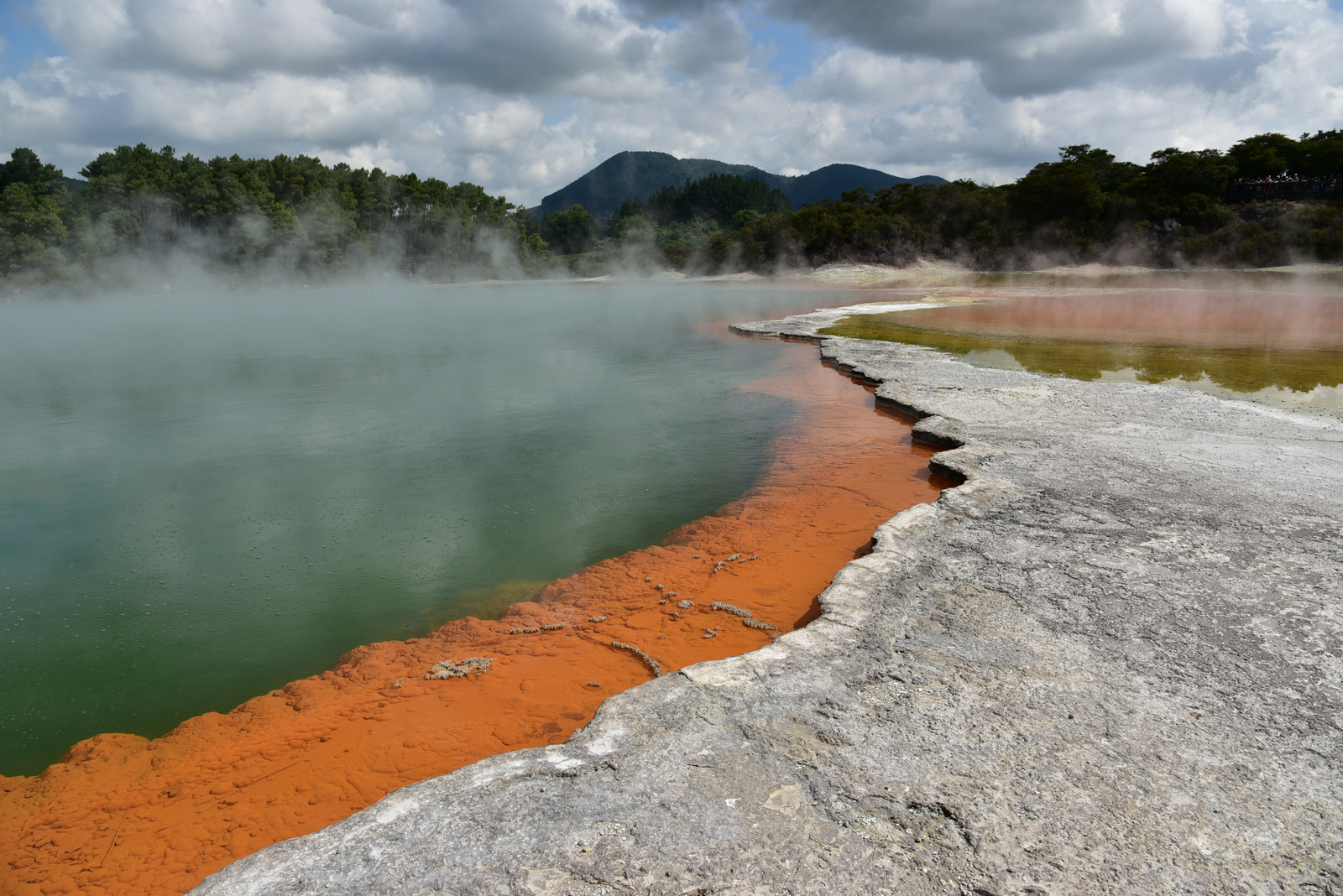The multiple faces of Rotorua
Rotorua is situated on the edge of the lake with the homonyms name in the center of the northern NZ island.
Located in an area with a pronounced geothermal activity and smelling intensely of sulfur, the city is also famous among adrenaline junkies for all the extreme activities that can be found here.
We’ve tested only one of them : rafting on the Okere Falls. Paddling through a string of 9 small waterfalls in an inflated boat beside 4 Americans and Canadians, it was just the perfect antidote for a hot summer day. And a well deserved shower after a hot night in our van in one of the public parkings in Rotorua.
We finished the day with an incursion in the Maori culture in the Mitai village. It was founded by the Mitai family on the exact spot of an ancient maori village that enclosed the sacred spring of Wai-o-Whiro.
Upon our arrival we were greeted by our guide who was fluent in an impressive number of languages – he was able to say “hello” as well as “chocolate cake” in their own languages to all guests (more than 20 nations)- I guess this can be really useful beside the local translations for “beer”.
We were served with 100 years old water extracted from the above-mentioned sacred spring – it didn’t really taste “sacred” but it was really pure – as well as not-so-sacred white wine. Before we were conducted through the nearby forest to the cultural performance they introduced us to our dinner : a slow cooked traditional maori festive meal – hangi. Hangi is prepared in a shallow hole in which is inserted slow burning wood then several layers of rocks and above the food (lambs, chickens, sweet potatoes) – all covered with cloths and sprinkled with water to generate steam.
The Maori warriors made a glorious entrance : they paddled down the sacred river in a war canoe, all tattooed and with menacing faces. Afterwards they presented us their traditional weapons, musical instruments, songs, superstitions and customs. And of course their most famous dance – the Haka, which was used to impress the enemy and to motivate the warriors before a fight. We also learned that the constant movement of the palms and tongue is a sign of LIFE – those who are dead are not moving, so during a traditional maori dance every living person must shake his palms and pull out the tongue, as well as show the white part of the eyes.
And when the show was over it was dinner time : a feast suited for a king! Zeb declared it was the best lamb she ever ate! And she even got a second plate.
After the feast we finished the night with another walk through the sacred forest to witness an amazing creature : the glow worm. It uses a natural bioluminescent process to make its tail glow in order to attract prey. Seeing all the small luminescent dots in the forest is the equivalent of glazing at the clear night sky – just magic!

